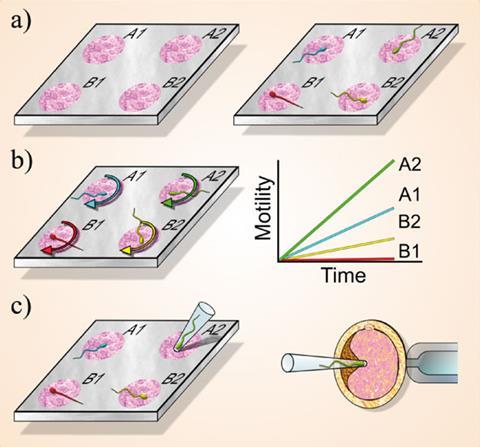
Assisted reproductive technologies have revolutionised the fertility world, however, sperm must be carefully picked on the basis of specific characteristics, including motility, to increase the chance of a successful pregnancy. However, more than half of the sperm selected for intra-cytoplasmic sperm injection (ICSI) using current procedures are damaged.
Discussions with fertility experts who kept finding the same issues with sperm quality inspired Loes Segerink and her team at the University of Twente, in the Netherlands, to search for a solution.
They used micro-contact printing to produce adhesive islands, ranging from 5 to 50µm in size, that can trap sperm and provide a platform for motility analysis. The islands, made of the protein fibronectin, are patterned onto polystyrene surfaces using polydimethylsiloxane stamps, and kept apart by sperm repellent pluronic acid F-127. Optimal adhesion of single cells was found for islands with a 10µm diameter.
After adhesion sperm demonstrated a spinning behaviour. Recognition software measured the rotational movements of individual captured sperm to identify premium specimens – the fastest spinners equalling the most motile.

Segerink hopes the work will result in a ‘better understanding of male fertility’ as sperm can be recovered for further morphology and DNA integrity analysis. This also means that the best quality sperm could be chosen and retrieved for fertilisation procedures.
Shuichi Takayama, a biomedical engineer at the University of Michigan, US, says this is a clever way to trap and keep track of a single sperm while at the same time allowing sufficient freedom to allow evaluation of motility. However, he also questions the scalability of the technique as the study ‘deals with relatively small numbers of sperm’.
References
This paper is free to access until 1st April 2014. Download it here:






No comments yet